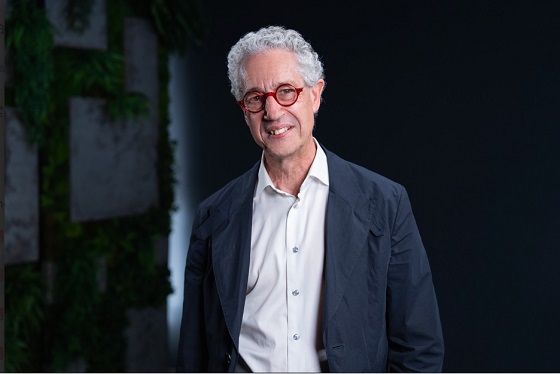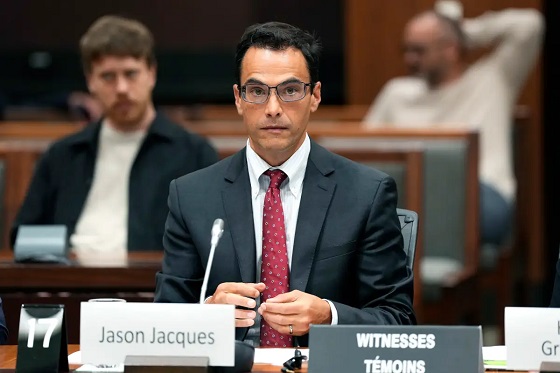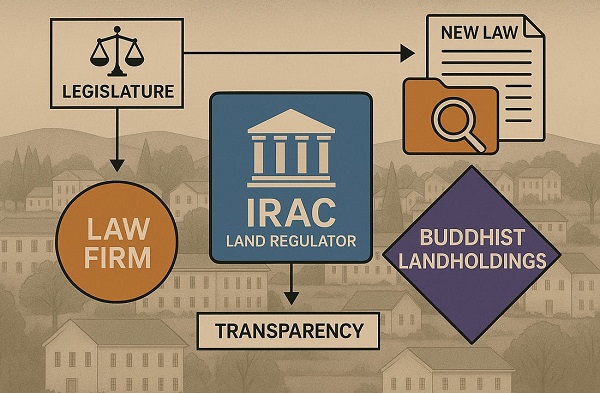Opinion
The repair job at Immigration

|
|
The department’s top bureaucrat answers a critical report, with rare candour
Seven months ago Neil Yeates, a retired former deputy minister of immigration, submitted a report on the organization of the department of Immigration, Refugees and Citizenship Canada to the current deputy minister, Christiane Fox.
Yeates’s 28-page report was blunt, plainspoken, critical but constructive. It said “the current organizational model at IRCC is broken.” At a time of global upheaval and dizzying growth in immigration levels, the department that decides who gets into Canada was no longer “fit for purpose,” he wrote. It was time for “major change.” When? “[T]he advice is to proceed now.”
On Thursday, a copy of Yeates’s report landed in my email inbox.
On Thursday night, Christiane Fox told me she is implementing many of Yeates’s recommendations, and described for me her plans for the department with a level of detail and candour I almost never see in today’s Ottawa.
I’m keeping the paywall off this story because I want it to be widely read. But producing work like this is my full-time job, and I’m able to get stories like this because people understand I’m writing for one of the best audiences in Canadian journalism. If you want to support my full-time work and join that audience, consider subscribing or upgrading to a paid subscription.
Copies of Yeates’s February IRCC Organizational Review Report have been floating around Ottawa because the department began implementing big changes this week. Some of the nearly 13,000 people who work in the department have asked for the rationale behind the changes. Yeates’s 28-page report makes the case succinctly.
Yeates was a top civil servant in Saskatchewan before moving to Ottawa in 2004. He held senior positions in three other departments before becoming deputy minister at Citizenship and Immigration Canada, the department now known as IRCC, where he served from 2009 to his retirement in 2013. That means he was Jason Kenney’s deputy minister for all of Kenney’s time at Immigration, but he was also a Trudeau Foundation mentor if you want to get excited about that instead.
His report’s purpose, he wrote, “is to provide strategic advice to the Deputy Minister on how the department can become a more efficient and effective organization.” After interviewing 36 people inside and outside the department, he decided it was a mess.
‘“[T]he current organizational model at IRCC is broken but is being held together by the hard work and dedication of staff,” he wrote. “At IRCC today department-wide planning is limited and some interviewees suggested it has in fact disappeared completely . There is no multi-year strategic plan, annual plans are not in place consistently across the department and consequently reporting is seen by many as haphazard.”
What the department did have going for it was a decent work environment: “In talking to senior managers at IRCC the culture was universally seen as ‘committed,’ ‘collaborative,’ ‘supportive’ and so on.” The senior managers Yeates interviewed saw this culture as “helping to overcome the shortcomings of the current organizational structure and of the weakness of the governance and management systems.”
The immigration department has always been the main portal between a messy world and an anxious nation. Lately the world had grown messier, Yeates noted, and the demands on the department were starting to hurt. “[T]he operating environment, both nationally and internationally, has grown ever more complex, unstable and frenetic,” he wrote.
In response, “the department has grown exponentially,” from 5,217 staff when Yeates left it in 2013 to12,721 this year, an expansion of 144%. The “Ex complement,” the department’s management cadre, grew from 135 to 227 over the same period, a smaller increase of 68%. That might explain why the department’s managers are so stressed, Yeates speculated. At any rate, the department’s structure was conceived for a much smaller staff and caseload.
To catch up, Yeates proposed big reform in four areas: Organizational Structure, Governance, Management Systems and Culture. He cautioned that tinkering with only one or a couple of those areas wouldn’t have the effect that a “Big Bang,” however difficult, would achieve.
The big problem in Organizational Structure was that the department isn’t organized along business lines: that one of the world’s leading destinations for asylum and humanitarian immigration doesn’t have an assistant deputy minister for asylum, for instance. The obvious challenge was that in a hectic world there will certainly be more crises, like those of recent years. “Should IRCC have a permanent ‘response team’ in place? The short answer is no.” Between crises that team of experienced trouble-shooters would just be twirling their thumbs. Instead Yeates proposed better contingency planning, including lessons learned from other crisis-management departments such as National Defence.
Under Governance, Yeates found a proliferation of over-large committees sitting through endless presentations and not really sure, at the end of each, whether they had decided anything. “Most of the actual decision-making occurs in DMO/ADM bilats,” he wrote, referring to meetings between the Deputy Minister’s office and a given Assistant Deputy Minister.
The section of Yeates’s report that deals with Management Systems reads like a parable of contemporary Ottawa: a “series of periodic crises” that somehow nobody anticipated, “descend[ing] into ‘issues management.’” What’s needed is much better planning and reporting, he wrote. When he was running the department barely a decade ago, every part of the department was reporting on progress against targets every three months. That system has fallen by the wayside. A department that’s obsessed with its “priorities” or with the to-do items in “a minister’s mandate letters” is “inherently limited” and guaranteed to be side-swiped by events intruding from the real world, he wrote.
The upshot of all this tunnel vision was that the department was expecting to “lapse,” or leave unspent, $368 million in projected spending for the year underway, even as passport-related spending was projecting a $238 million deficit.
Yeates’s report closed with the sort of plea that’s traditional in this sort of exercise, essentially pleading not to be ignored. “IRCC is at a crossroads and as Yogi Berra famously quipped ‘when you come to a fork in the road, take it,’” he wrote. Change is hard, but a “substantial majority” of the people he interviewed told him it was overdue.

Neil Yeates and Christiane Fox.
And that’s where the report ends. I had to decide what to do with it. First, always consider the possibility that you’ve been handed a fake report, or the first draft of something that was later amended beyond recognition. I emailed the office of Immigration Minister Marc Miller looking for comment. They handed me off to the civil servants in the department’s communications staff. But I also emailed Christiane Fox, the deputy minister, offering her a chance to comment. This is the sort of chance that people in Ottawa usually don’t touch with a barge pole.
But Fox called me on Thursday night and responded in detail. I asked: was the conversation on the record? She thought out loud for a few seconds, working her way up to a “Yes.” I don’t want to belabour this, but that answer is very rare these days.
The other way you can help me, besides subscribing, is to tell people about the work I’m doing here. Share this story with friends and family, or post it to your social networks. Let people know what we’re building here.
Christiane Fox had been the DM at Indigenous Services for all of 22 months when she was sent to run IRCC in July of 2022. The new job “felt like crisis”: the department was sending weekly updates to an ad hoc committee of ministers whose job was to fix months of chaos in airports and passport offices.
“They felt like they were under duress,” Fox said. “Everyone was exhausted.” New staff were just “tacked on when there was a problem,” including the creation of an entirely new sector for Afghanistan. Fox talked about this with some of the most experienced public servants in town, including Yeates and Richard Dicerni, Fox’s former DM from her days as a young public servant at Industry, who passed away this summer and whose contribution to public life in Canada is hard to measure.
“I kind of said, ‘We’ve got to make some changes. And I don’t want to do it overnight. But I also don’t want to spend two years figuring out what a new model could look like.’” Yeates, whom she didn’t know well but who knew the department’s history, seemed like solid outside counsel.
While Yeates was doing his thing, Fox and the previous immigration minister, Sean Fraser, were consulting — with “business leaders, academics and clients” — about the department’s future. By June of this year, she had a plan, based on Yeates’s report and those consultations. She’s been rolling it out since then, from top managers on down, and on Wednesday, by way of explanation for the changes that are coming, she sent the Yeates report to enough people that I got a copy. A department-wide meeting is scheduled for this coming week.
What’s changing? “The model is now just more of a business-line model,” she said, reflecting Yeates’s first big recommendation.
So there’ll be a stronger crisis-planning sector. In a world that keeps producing humanitarian crises, the goal is to learn lessons for next time from Ukraine, Afghanistan and elsewhere. “Most importantly, we’ll have a group dedicated to thinking about these issues, planning for crisis.” It won’t eliminate the need to “surge,” or quickly add new staff when something flares up. “But in the past, we ended up surging so much that all of our other business lines suffered every time there was a crisis.” The goal now is to get better at anticipating so the department’s regular work doesn’t suffer.
“Asylum and Refugee. There was no Asylum ADM,” she said, reflecting another Yeates critique. “This is probably the thing that causes me the most heartache, in terms of, how are we going to deal with this as a country, globally? What are some of the tools that we have? How do we support the most vulnerable? How do we have a system that is fast and fair? So Asylum and Refugee will now be a sector within the department.”
In addition, there’ll be a sector focused on Economic Immigration and Family. “The business community didn’t really feel like we were actually talking to them about labour shortages, about skills missions, about what is the talent that the country needs.” And a sector on francophone immigration, identifying French-speaking sources of immigration and taking into account the needs of French-speaking newcomers.
“Other sectors remain kind of consistent. Like, we’ve always had a focus on border and security, but we will now have a team that’s really migration integrity, national security, fraud prevention, and looking at case management in that context.”
Fox said she’s working on more of a “client focus” in the department’s work. “When I joined the department I remember, my first few weeks, thinking, ‘Everybody talks about inventory and backlog and process.’ But I didn’t feel clients and people were at the forefront.” This may sound like a semantic difference. But anyone who’s been treated as inventory and backlog can testify to the potential value in any reform that restores a measure of humanity to recipients of government service.
I’ve been arguing for months here that simply acknowledging problems and identifying possible solutions is better communications than the happy-face sloganeering that passes for so much of strategic comms these days. Here, quite by accident, I’d stumbled across somebody who seems to have had similar thoughts. (There’s an irony here, because Fox’s CV includes a long stint as a director of strategic communications in the Privy Council Office.)
“There will be things that will come up,” Fox said, “that may not be as smooth a transition as we thought, or maybe a bit clunky, that we need to rethink. What we’ve told the employees is, it won’t be perfect. We needed to change, we’re going to change, but there’s going to be room for conversation around issues that arise as we go through this process.”
To subscribe to the full Paul Wells experience, upgrade your subscription.
Energy
It should not take a crisis for Canada to develop the resources that make people and communities thrive.

From Resource Works
Canada is suddenly sprinting to build things it slow-walked for a decade.
“Canada has always been a nation of builders, from the St. Lawrence Seaway to Expo 67. At this hinge moment in our history, Canada must draw on this legacy and act decisively to transform our economy from reliance to resilience. We are moving at a speed not seen in generations,” announced Prime Minister Mark Carney at the end of August.
He was echoed by British Columbia Premier David Eby shortly after.
“There’s never been a more critical time to diversify our economy and reduce reliance on the U.S., and B.C. is leading the way in Canada, with clean electricity, skilled workers and strong partnerships with First Nations,” the premier stated after his government approved the Ksi Lisims LNG project, led by the Nisga’a nation.
In the face of President Donald Trump’s tariffs, Ottawa has unveiled a first wave of “national projects” that includes an expansion of LNG Canada to 28 million tonnes a year, a small modular reactor at Darlington, two mines, and a port expansion, all pitched as a way to “turbocharge” growth and reduce exposure to a trade war with the United States.
The list notably excludes new oil pipelines, and arrives with rhetoric about urgency and nation-building that begs a simple question: why did it take a crisis to prioritize what should have been routine economic housekeeping?
The most tangible impact of resource projects can be observed in the impact it has on communities. The Haisla Nation is enjoying an economic renaissance with their involvement in the LNG Canada project on their traditional lands, which became operational in June.
Furthermore, the Haisla are set to unveil their own facility, Cedar LNG, in 2028. Already, the impact of employment and strong paycheques in the community is transforming, as former Haisla Chief Councillor Crystal Smith as attested many times.

Former Haisla Chief Councillor Crystal Smith.
“Let’s build a bright and prosperous future for every Canadian and every Indigenous person that wants to be involved, because change never happens inside of our comfort zones, or the defensive zone,” said Crystal Smith at a speech delivered to the 2025 Testimonial Dinner Award on April 24 in Toronto.
Fortunately, the new pro-resource posture has a legislative backbone. Parliament passed the One Canadian Economy Act to streamline approvals for projects deemed in the national interest, a centrepiece of the government’s plan to cut internal trade barriers and fast-track strategic infrastructure.
Supporters see it as necessary in a period of economic rupture, while critics warn it risks sidelining Indigenous voices in the name of speed. Either way, it is an admission that Canada’s previous processes had become self-defeatingly slow.
British Columbia offers a clear case study. Premier David Eby is now leaning hard into liquefied natural gas. His government and Ottawa both approved the Nisga’a Nation-backed Ksi Lisims LNG project under a “one project, one review” approach, with Eby openly counting on the Nisga’a to build support among neighbouring nations that withheld consent.
It is a marked turn from earlier NDP caution, framed by the premier as a race against an American Alaska LNG push that could capture the same Asian markets.
Yet the pivot only underscores how much time was lost. For years, resource projects faced overlapping provincial and federal hurdles, from the Impact Assessment Act’s expanded federal reach to the 2018 federal tanker ban on B.C.’s north coast.
Within B.C., a thicket of regulations, policy uncertainty, and contested interpretations of consultation obligations chilled investment, while political positions on pipelines hardened. Industry leaders called it “regulatory paralysis.” These were choices, not inevitabilities.
The national “go-fast” stance also arrives with unresolved tensions. Ottawa has installed a Calgary-based office to clear and finance major projects, led by veteran executive Dawn Farrell, and is touting the emissions performance of LNG Canada’s expansion.

Dawn Farrell, head of the Major Projects office in Calgary.
At Resource Works, we wholeheartedly endorsed the move, given the proven ability and success of Dawn Farrell in the resource industry. It must also be acknowledged that the major projects office will only be an office unless it meaningfully makes these projects happen faster.
A decade that saw eighteen B.C. LNG proposals produced one major build, and moving to LNG Canada’s second phase is entangled with power-supply constraints and policy conditions. That slow cadence is how countries fall behind.
If the current urgency becomes a steady habit, Canada can still convert this scramble into lasting capacity. If not, the next shock will find us sprinting again, only further from the finish line.
Resource Works News
Energy
A picture is worth a thousand spreadsheets

From Resource Works
What if the secret to understanding Canada’s energy future lies not in spreadsheets but in storytelling?
When I think about who has done the most to make sense of Canada’s energy story — not just in charts and forecasts but in human terms — Peter Tertzakian sits near the top of that list. He’s an energy economist, author, and communicator who has spent decades helping Canadians understand the world beneath their light switches and fuel gauges — and why prosperity, energy, and responsible development are inseparable.
Peter is the founder and CEO of Studio.Energy. He is also widely known as the founder of the ARC Energy Research Institute and co-host of the ARC Energy Ideas podcast, alongside Jackie Forrest. Week after week, they unpack what’s happening in the markets, in technology, and in policy, always with the rare gift of clarity. He’s also the author of two influential books, A Thousand Barrels a Second and The End of Energy Obesity, both written long before “energy transition” became a household term.
When we sat down for our Power Struggle conversation, I mentioned how remarkable it is that someone with Peter’s credentials — an economist, investor, and advisor to industry — is also an exhibiting artist whose photography can regularly be found in a gallery in the Canadian Rockies. That’s when he smiled and said what has become one of his signature lines: “I’ve always said a picture is worth a thousand spreadsheets.”

What followed was a fascinating discussion about how visual storytelling can bridge the gap between data and understanding. Peter explained that what began as a hobby has evolved into a personal quest to communicate complex energy subjects more effectively. His photographs, which range from industrial scenes to landscapes shaped by human activity, help connect the emotional and analytical sides of the energy story. The pictures, he said, reveal the same truths that his spreadsheets do — only in a way that more people can feel.
That resonates deeply with what we do at Resource Works — translating complexity into clarity so that Canadians can see how responsible resource development strengthens communities, funds public services, and opens doors for Indigenous partnerships. Like Peter, we believe that understanding energy isn’t about choosing sides; it’s about understanding systems, trade-offs, and the people behind the numbers.
Peter’s concern — and one I share — is how difficult it has become to find truth amid the noise. “People are bombarded by noise, especially today. And not all of that noise is true,” he said. “The challenge now is extracting the signal.” Whether you’re a policymaker, a corporate leader, or just someone trying to make sense of global change, Peter’s approach is to step away from confrontation and toward comprehension. His ability to blend visuals, narrative, and numbers makes complicated issues accessible without oversimplifying them.
Prosperity, Not Population, Drives Energy Demand
Our conversation also turned to the forces shaping global energy demand. Peter reminded me that the biggest driver isn’t population growth — it’s prosperity. “When a person moves from a rural setting to a city, their energy consumption goes up twentyfold, sometimes more,” he said. The story of urbanization, particularly in China, explains much of the past few decades of energy growth. Renewables have slowed that curve, but as Peter points out, “our use of fossil fuels is still growing.”
What I most admire about Peter is that he doesn’t preach. “I don’t have all the answers,” he told me. “My role is to discuss treatment options — not to perform the surgery.” It’s a refreshingly honest stance in a world where too many experts claim certainty.
On Power Struggle, Peter Tertzakian reminded me why he’s so respected across the energy world: he brings intelligence without ego, curiosity without ideology, and a deep respect for the audience’s ability to think. His work reminds us that Canada’s resource story — when told with honesty and creativity — is one of innovation, community, and shared prosperity. And that storytelling — visual, verbal, and numerical — remains our most powerful tool for navigating change.
- Power Struggle audio and transcript
- Peter Tertzakian in Arc Energy Research Institute podcasts
- Peter Tertzakian on X
- Peter Tertzakian on LinkedIn
- Stewart Muir on X
- Stewart Muir on LinkedIn
Power Struggle on social media
-

 Business2 days ago
Business2 days agoMark Carney Seeks to Replace Fiscal Watchdog with Loyal Lapdog
-

 Business2 days ago
Business2 days agoP.E.I. Moves to Open IRAC Files, Forcing Land Regulator to Publish Reports After The Bureau’s Investigation
-

 International1 day ago
International1 day agoIs America drifting toward civil war? Joe Rogan thinks so
-

 Censorship Industrial Complex1 day ago
Censorship Industrial Complex1 day agoEU’s “Democracy Shield” Centralizes Control Over Online Speech
-

 Energy2 days ago
Energy2 days agoCanada’s oilpatch shows strength amid global oil shakeup
-

 COVID-192 days ago
COVID-192 days agoMajor new studies link COVID shots to kidney disease, respiratory problems
-

 Fraser Institute20 hours ago
Fraser Institute20 hours agoCourts and governments caused B.C.’s property crisis—they’re not about to fix it
-

 Alberta18 hours ago
Alberta18 hours agoChatGPT may explain why gap between report card grades and standardized test scores is getting bigger






